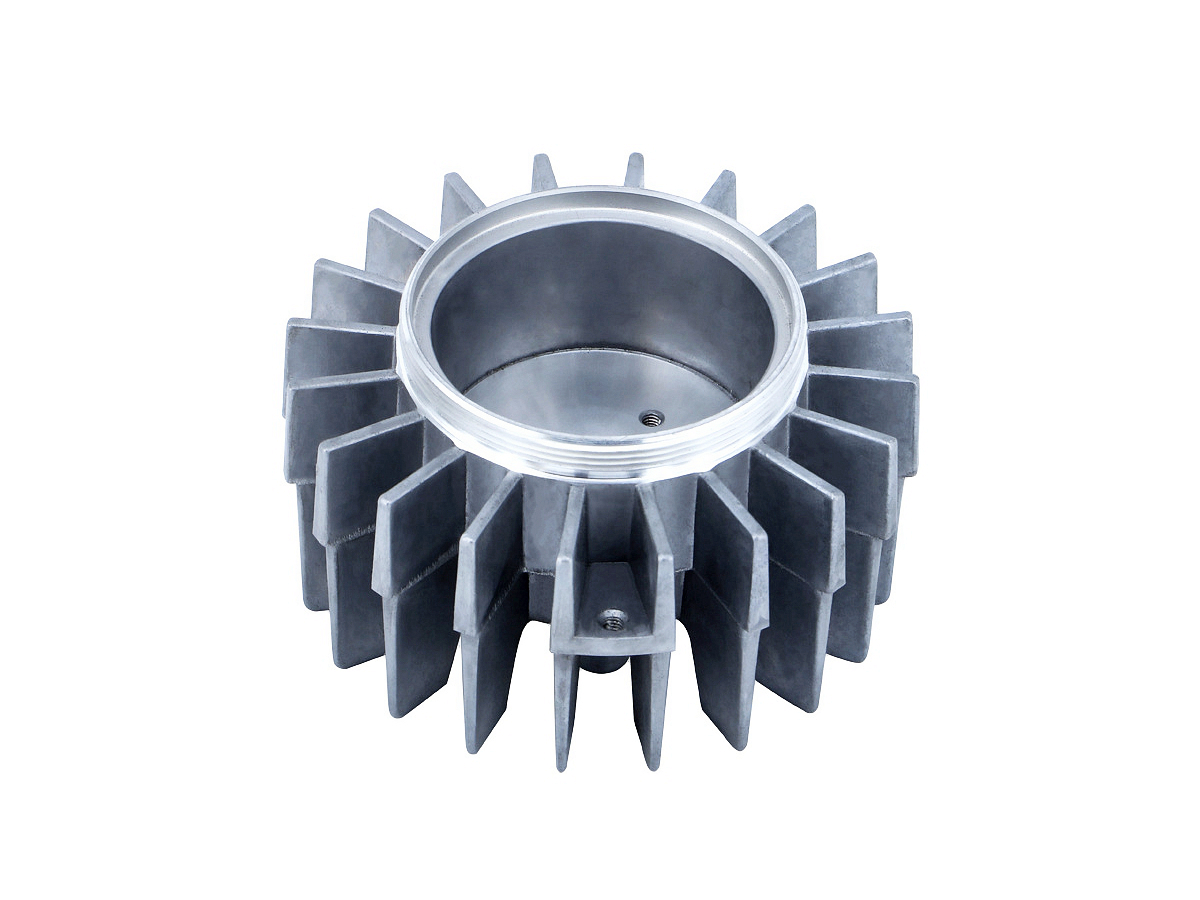Brighter and Smarter: The Advantages of Aluminum Die Castings in LED Lighting Solutions
Introduction
LED lighting has become the industry standard due to its energy efficiency, longer lifespan, and superior brightness. LED lighting components must be manufactured with precision, durability, and thermal efficiency to capitalize on these advantages fully. Aluminum die casting is an essential manufacturing solution, providing lightweight yet robust components optimized for effective heat dissipation, accuracy, and cost efficiency.
This blog explores the role aluminum die casting plays in enhancing LED lighting solutions, covering the manufacturing process, the ideal alloys used, critical surface treatments, and innovative prototyping methods.
Aluminum Die Casting Manufacturing Process for LED Lighting
The aluminum die casting manufacturing process involves injecting molten aluminum into precision-engineered molds at pressures typically between 10,000 to 30,000 psi. This method enables LED lighting manufacturers to achieve high precision, structural integrity, and thermal efficiency in components such as housings, heat sinks, and reflectors.
The key stages in aluminum die casting include mold design, high-pressure aluminum injection, rapid cooling, trimming, and finishing. This efficient manufacturing method ensures dimensional accuracy, smooth finishes, and intricate details critical for performance and aesthetic appeal in LED lighting solutions.
Moreover, specialized die-casting design services ensure optimal structural efficiency and thermal management, which is vital for high-performance LED lighting applications.
Optimal Aluminum Alloys for LED Lighting Components
Selecting the appropriate aluminum alloy significantly influences the effectiveness and lifespan of LED lighting products. The commonly preferred alloys include:
A380 Aluminum Alloy: Noted for its excellent fluidity and mechanical strength (tensile strength up to 240 MPa), A380 offers superior thermal conductivity (96 W/mK), making it ideal for LED heat sinks and housings, enhancing heat dissipation and extending the lifespan of LED chips.
ADC12 (A383) Aluminum Alloy: Renowned for its high dimensional stability and machinability, ADC12 alloy delivers tensile strengths of around 250 MPa. Its superior machinability and corrosion resistance suit complex reflector designs and LED enclosures.
AlSi12 Alloy: With exceptional thermal conductivity (approximately 150 W/mK), this alloy efficiently dissipates heat from LED sources, minimizing thermal stress and enhancing luminous efficiency.
Selecting suitable casting materials ensures LED lighting components offer longevity, reliability, and performance consistency.
Surface Treatments for Enhanced LED Lighting Components
Proper surface treatments significantly increase the durability, reflectivity, and aesthetic quality of LED lighting parts, which is crucial for their functionality and appearance. Essential surface treatments include:
Powder Coating: Delivers outstanding durability, corrosion resistance, and visual appeal. It is particularly suitable for outdoor LED fixtures, protecting from weathering, UV exposure, and humidity.
Anodizing: Creates an oxide layer with thicknesses typically between 5 to 25 microns, significantly enhancing corrosion and abrasion resistance. It also improves the emissivity properties of heat sinks, optimizing thermal management for LED components.
Chrome Plating: This provides a highly reflective surface with exceptional corrosion resistance, which is ideal for LED reflectors and increases optical efficiency, brightness, and uniformity.
Applying appropriate surface treatments improves LED lighting solutions' longevity, efficiency, and visual quality.
Prototyping Methods for Advanced LED Lighting Design
Rapid prototyping allows manufacturers to validate and refine LED lighting designs, ensuring optimal performance before mass production. Prominent methods include:
3D Printing: Provides quick turnaround times for prototypes, facilitating early evaluation of form, fit, and function without heavy tooling investments. It helps accelerate product development and market introduction.
CNC Machining: Offers precision machining capabilities with tolerances down to ±0.01 mm, allowing detailed verification of thermal properties, dimensional accuracy, and mechanical stability of LED lighting prototypes.
Urethane Casting: Ideal for producing small quantities of functional prototypes closely mimicking the final die-cast parts, enabling comprehensive evaluation and validation of the LED lighting designs.
Adopting effective prototyping solutions ensures high-quality, performance-driven LED lighting products swiftly reach the market.
Advantages of Aluminum Die Casting in LED Lighting
Aluminum die casting delivers several distinct benefits for LED lighting solutions:
Superior Thermal Management: Aluminum’s excellent thermal conductivity efficiently dissipates heat, significantly extending LED lifespan.
Precision and Complexity: Allows the manufacturing of complex designs with high dimensional accuracy, ensuring optimal component fit and functionality.
Cost Efficiency: Reduces production costs through mass production capabilities without sacrificing quality or performance.
Corrosion Resistance: Ideal for both indoor and outdoor lighting applications, providing exceptional durability and reliability.
Eco-friendly Production: Aluminum is recyclable, promoting sustainable and environmentally responsible manufacturing practices.
Key Applications in LED Lighting Solutions
Aluminum die casting plays a critical role in various LED lighting applications, including:
Heat sinks for thermal management in LED chips
LED streetlight housings
Reflectors enhancing luminous efficiency
Architectural lighting fixtures
Automotive LED lighting components
Outdoor LED floodlights and area lighting
Integrating aluminum die casting ensures brighter, smarter, and longer-lasting LED lighting solutions that meet the rigorous demands of modern lighting environments.
FAQs:
Why is aluminum die casting optimal for LED lighting components?
What aluminum alloys best support thermal efficiency in LED lighting?
How do surface treatments improve LED lighting component performance?
What role does rapid prototyping play in LED lighting product development?
What are the common aluminum die-cast components found in LED lighting solutions?

